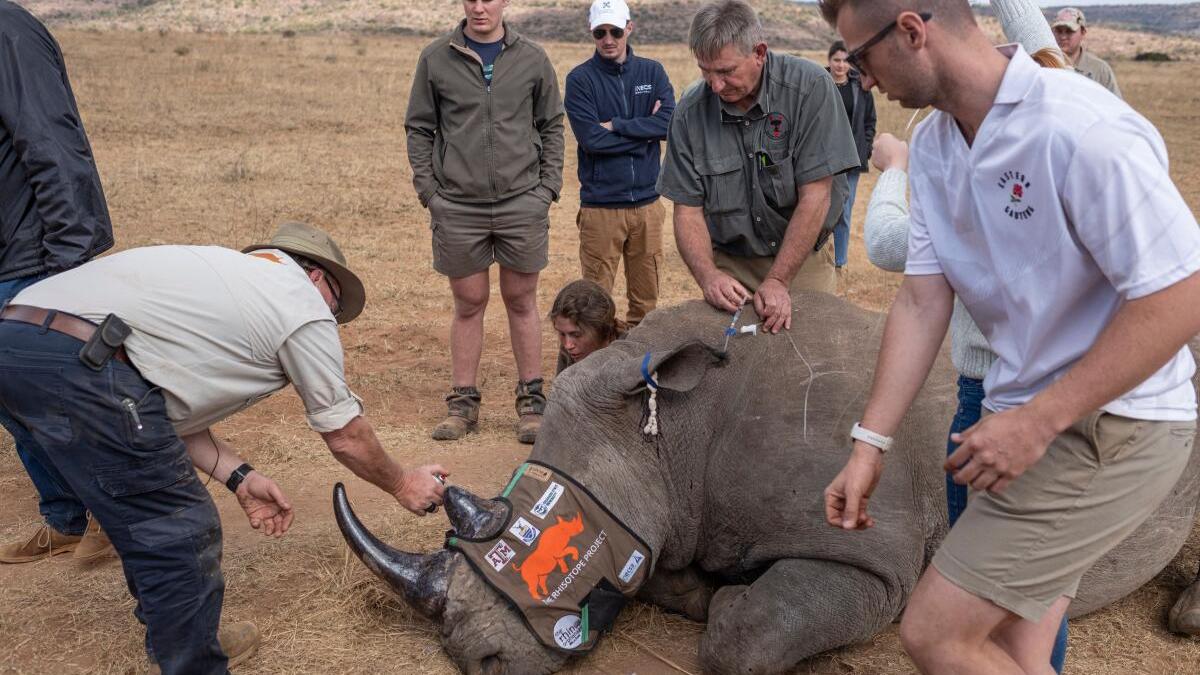Scientists in South Africa have developed a revolutionary strategy to combat rhino poaching by making the animals’ horns slightly radioactive.
Methodology
- Radioactive Injection: A non-lethal, radioactive substance is injected into the rhino’s horn.
- Detection: The radioactivity can be detected by scanning devices at airports and border crossings.
Objectives
- Diminishing Market Value: The presence of radioactivity reduces the desirability of rhino horns in the black market.
- Traceability and Risk: Radioactive horns are traceable and risky to handle, thereby reducing poaching incidents.
Broader Conservation Efforts
- Population Impact: Rhino populations have been severely impacted by poaching due to high demand for their horns.
- Demand Sources: Rhino horns are highly sought after for their supposed medicinal properties and as status symbols, especially in parts of Asia.
Safety and Deterrence
- Health Safety: The radioactive substance is safe for rhinos and does not harm their health.
- Deterrent Effect: The radioactivity presents a significant deterrent to poachers.
Complementary Anti-Poaching Measures
- Surveillance and Enforcement: Increased surveillance and better enforcement of wildlife protection laws.
- Community Engagement: Programs aimed at engaging communities in conservation efforts.
Potential for Broader Application
- Other Endangered Species: Success with rhinos could lead to similar techniques being applied to other endangered species.
- Wildlife Crime: This approach provides a new tool in the fight against wildlife crime.
Conclusion
Scientists and conservationists are hopeful that this innovative approach will help reduce rhino poaching and contribute to the broader efforts to save rhinos from extinction.
Multiple Choice Questions (MCQs):
- What is the primary goal of making rhino horns slightly radioactive?
- A. To improve the health of rhinos
- B. To make the horns more valuable on the black market
- C. To diminish the value of rhino horns in the black market
- D. To make rhino horns glow in the dark
- How is the radioactivity in rhino horns detected?
- A. Through visual inspection
- B. By using Geiger counters
- C. By scanning devices at airports and border crossings
- D. Through the smell of the horns
- Why are rhino horns highly sought after, primarily in parts of Asia?
- A. For their decorative value
- B. For their supposed medicinal properties and as status symbols
- C. For their use in manufacturing
- D. For their nutritional content
- What is the impact of the radioactive substance on the rhinos’ health?
- A. It is harmful to their health
- B. It makes them more aggressive
- C. It is safe and does not harm their health
- D. It improves their immune system
- Which of the following is NOT part of the broader conservation efforts mentioned?
- A. Increased surveillance
- B. Better enforcement of wildlife protection laws
- C. Community engagement programs
- D. Genetic modification of rhinos
